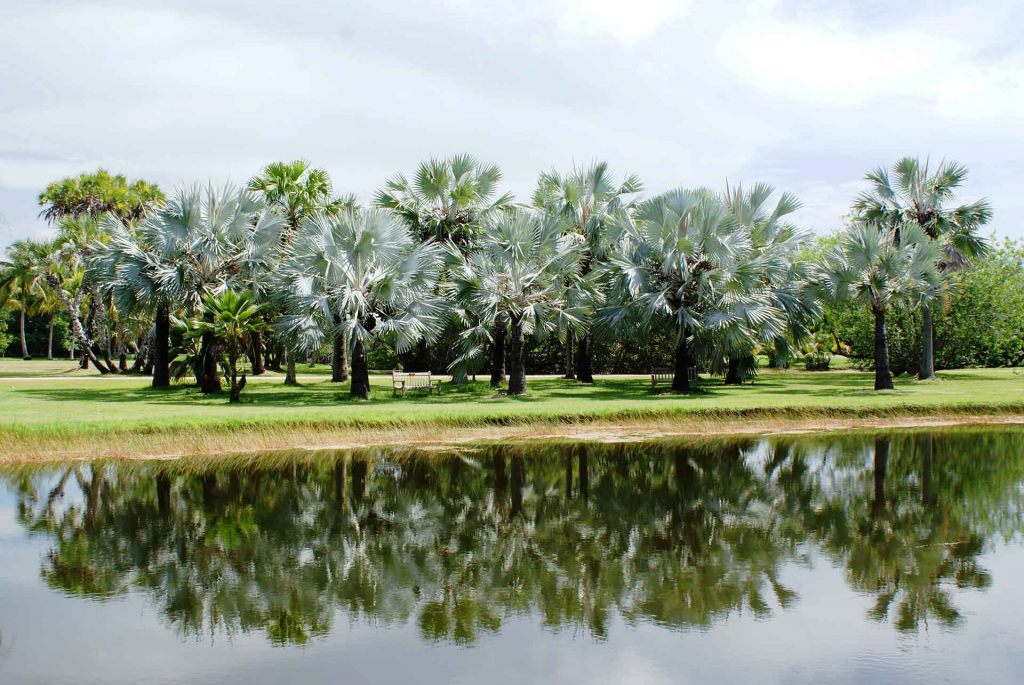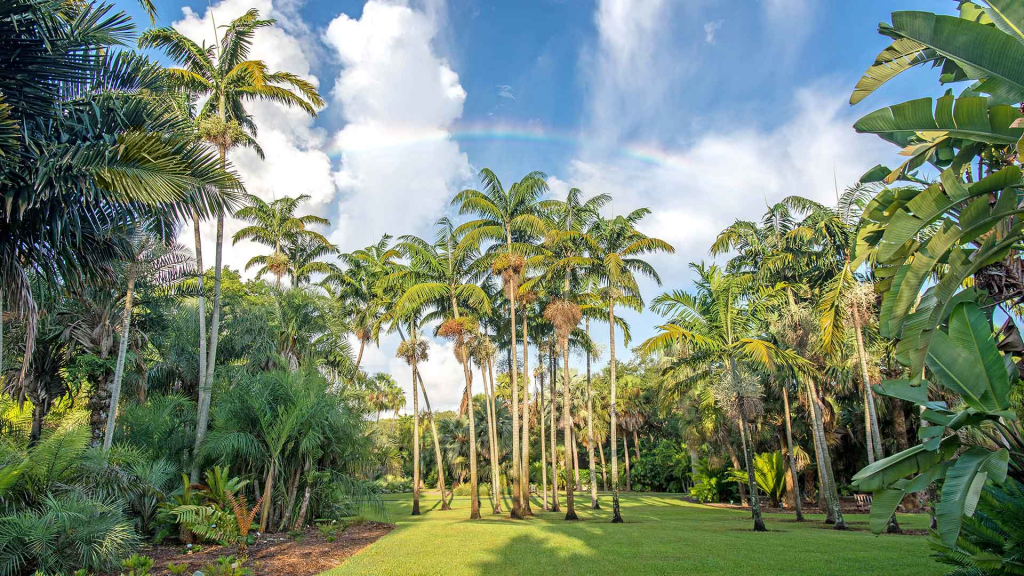Montgomery Palmetum & Palm Collection

Prepare to be amazed by the Montgomery Palmetum’s world-renowned botanical display and research collection of palms from all over the world. Home to 1,000 palms across its 13 acres, the Palmetum is generally recognized as one of the most important documented palm collections on the planet.
The Montgomery Palmetum located in the south west portion of the uplands was one of the earliest sections to be planted. The thirty designated planting areas or plots within the palmetum, as drawn by W. L. Phillips, the landscape architect of Fairchild Tropical Botanic Garden, specified the palm genus or genera to be planted in each area. This organized plan is helpful to botany students as well as casual visitors to see the similarities of related palms.
With the more than 1,000 plants representing the palm family (Arecaceae) in the Montgomery Palmetum there are variations in required conditions. Some species require shade while others require a sunny exposure. The palmetum is a wonderful mix of sun and shade, palms of all sizes and shapes, and interesting characteristics including spiny stems, trunks covered with fibers in interesting textures, leaves that are palmate or pinnate or costapalmate. The Montgomery Palmetum is a palm lovers’ delight!
A glimpse of the planting plan
Some examples of the planting plan include Plot 110 which consists of palms in the Hyophorbe, Pseudophoenix and Jubaea genera. Plots 106, 109 and 113 have Sabal palms. Plot 108 exhibits members of the genus Latania. Plot 107 has palms which belong to the Thrinax, Coccothrinax and Copernicia genera. Plot 115 has members of the genus Copernicia. Plots 118, 119 and 125 have members of the Livistona genus.


